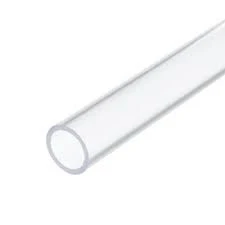Aug . 17, 2024 03:16 Back to list
High-Density Polyethylene Roofing Sheets for Durable and Efficient Roof Solutions
The Advantages of HDPE Roofing Sheets
High-Density Polyethylene (HDPE) roofing sheets are gaining popularity in the construction industry due to their exceptional strength, durability, and versatility. These sheets are manufactured from high-density polyethylene, a type of plastic known for its robustness and resistance to various environmental factors. In this article, we will explore the benefits of using HDPE roofing sheets and their applications in modern construction projects.
Strength and Durability
One of the primary advantages of HDPE roofing sheets is their remarkable strength. HDPE is able to withstand a wide range of temperature variations and environmental stresses, making it an ideal choice for roofing materials. Unlike traditional roofing materials, HDPE does not crack, warp, or become brittle over time. This durability ensures that buildings remain protected from the elements for years, reducing the need for frequent repairs or replacements.
Water Resistance
HDPE roofing sheets are inherently water-resistant, which is crucial for preventing leaks and water damage. The non-porous surface of HDPE prevents water infiltration, making it an excellent choice for climates with heavy rainfall or snow. This feature not only protects the structural integrity of the building but also contributes to energy efficiency by reducing the need for excessive heating and cooling caused by water leaks.
UV Resistance
In addition to their water resistance, HDPE roofing sheets offer excellent protection against ultraviolet (UV) rays. Prolonged exposure to UV radiation can degrade many roofing materials over time, but HDPE is highly resistant to UV damage. This allows HDPE roofing sheets to retain their color and structural integrity for much longer periods, making them a cost-effective option for long-term roofing solutions.
hdpe roofing sheet

Lightweight and Easy Installation
Another significant benefit of HDPE roofing sheets is their lightweight nature. This feature simplifies transportation and installation, reducing labor costs and time on the construction site. The ease of handling HDPE sheets makes them an attractive option for both contractors and DIY enthusiasts alike. Moreover, they can be easily cut and shaped to fit various roofing designs, providing versatility in architectural applications.
Eco-Friendly Option
As sustainability becomes increasingly important in the construction industry, HDPE roofing sheets stand out as an eco-friendly option. They are made from recyclable materials, and their longevity reduces the frequency of replacement, minimizing waste. Additionally, many manufacturers produce HDPE sheets using environmentally friendly processes, further contributing to sustainability efforts in construction.
Versatile Applications
HDPE roofing sheets are suitable for a wide range of applications beyond traditional roofing. They can be used for creating awnings, canopies, carports, and even agricultural structures. Their versatility makes them an attractive option for both residential and commercial projects. Whether it’s a simple shed or a complex industrial facility, HDPE roofing sheets can be adapted to meet various requirements.
Conclusion
In conclusion, HDPE roofing sheets provide numerous advantages that make them an ideal choice for modern construction projects. Their strength, durability, water resistance, UV protection, lightweight nature, and eco-friendly features contribute to their rising popularity among builders and architects. As the construction industry continues to evolve, incorporating innovative and sustainable materials like HDPE can lead to more efficient and environmentally responsible building practices. Whether you are planning a new construction project or looking to upgrade an existing structure, HDPE roofing sheets are certainly worth considering for your roofing needs.
-
PVC Transparent Sheet Roll - Durable & Flexible PVC Plastic Sheet Roll for Industrial & Home Use
NewsJun.24,2025
-
High-Quality PVC PPR Pipes and Fittings Durable ERA PPR Solutions
NewsJun.10,2025
-
High-Quality Large HDPE Sheets & Large Diameter PVC Pipe Durable Large PVC Pipe Supplier
NewsJun.10,2025
-
High Density Polyethylene Cutting Board - Durable & Food Safe
NewsJun.09,2025
-
3 Inch PVC Pipe for Durable Irrigation Affordable & Reliable
NewsJun.09,2025
-
Premium PPR Plastic Water Pipe Fittings - Durable & Leak-Free
NewsJun.09,2025

